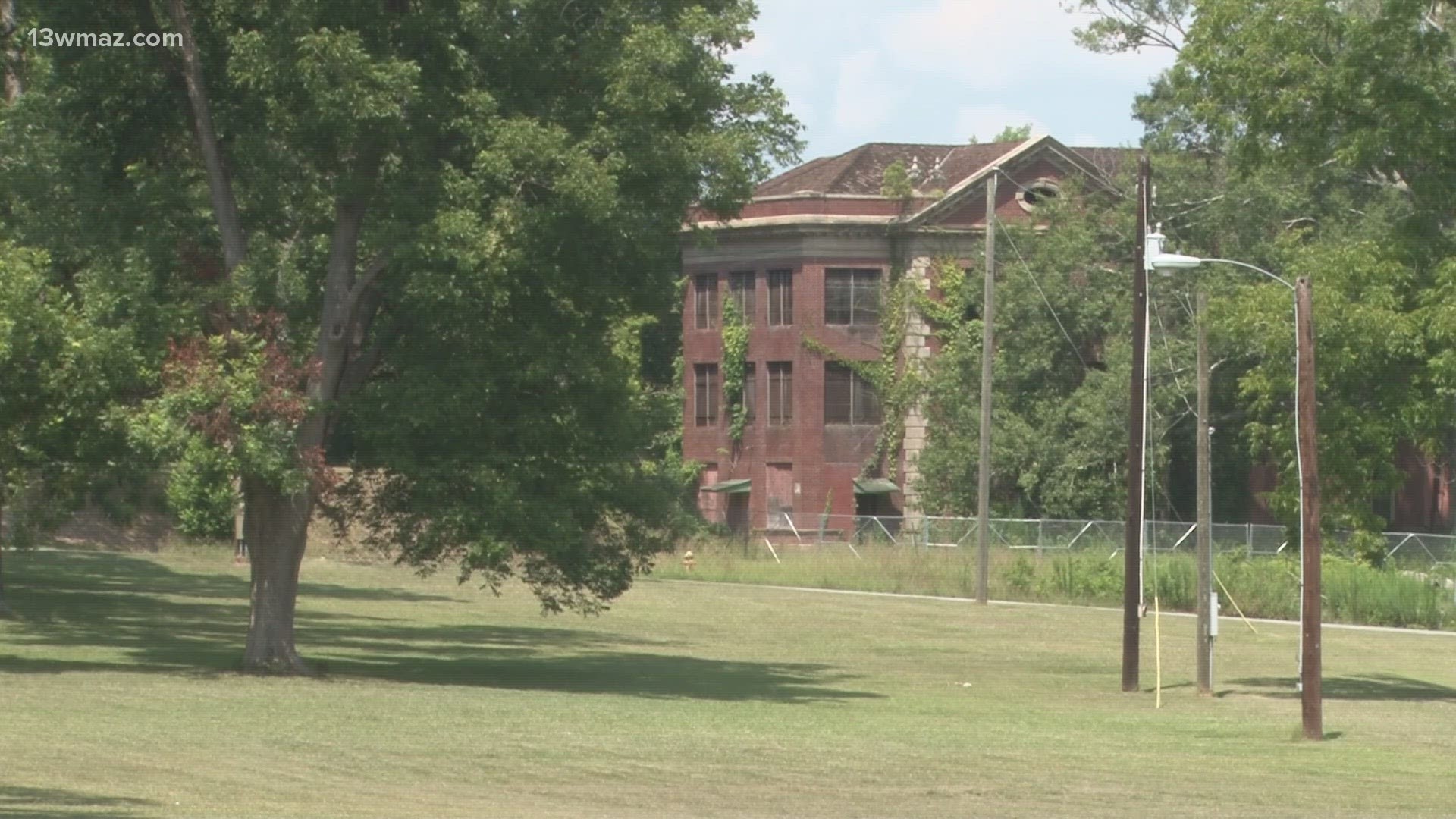MILLEDGEVILLE, Ga. — One of the nation's largest mental health hospitals, Milledgeville's Central State Hospital was opened in 1842.
Many of its buildings are now abandoned, so the state plans to demolish some of them.
Some of the hospital's abandoned buildings are almost 200 years old, sitting on 2000 acres.
But for some in Milledgeville, it’s a nice place to have lunch.
“We come out here sometimes on our break, sit in the pecan grove,” Les Tyson said.
Tyson and a co-worker have worked at the campus pharmacy for over two decades.
“When we were younger, this is what Milledgeville was known for," Tyson said. "Central State Hospital, so it's kind of sad to see it go down the way it is."
Last October, it seemed like fences had sprouted up around some Central State Hospital buildings overnight. Some people thought that could mean demolition, and they were right.
On Tuesday, Governor Brian Kemp signed executive orders to demolish four buildings that the state says are unsafe.
The Walker building, the Jones building, the Green building and the Wash building.
But the iconic Powell Building will remain intact, according to the hospital's owner Georgia Department of Behavioral Health and Developmental Disabilities, and they say it will serve as "a centerpiece" in redevelopment plans.
Still, Historic preservationist Edwin Atkins says it makes him feel sick.
“I feel like I don’t want to continue to try to fight the fight anymore because it's useless,” he explains.
Atkins began collecting information on the campus in 2015.
“That’s because that's where my family had lived,” he said. “They lived on the prison farm with my great-grandfather, and then they moved into town in the 40s. My great-grandmother on the other side was a patient.”
Atkins says he has deep family ties to Central State like many others in town.
“The Jones Hospital, which was 1939– there's many people on our site that were born in that hospital," Atkins said.
With that deep connection, Atkins created a Facebook group called "Friends of Central State Hospital" that’s grown to over 11,000 members.
“In order to not let history fade away, if you don't have anything to link it to – the physical being – you really don't have much,” he says
Plus, Atkins says demolition cannot be reversed.
Without preserving the buildings, the history of 12,000 patients, 6,000 employees and 50,000 deaths go with it, he says.
"That was their home,” Atkins said. “That was the economic engine for Milledgeville. That's where people made their money. Now, their money's gone, their houses are torn down, their jobs have been vacated and now the physical presence is gonna be taken down. What a slap in the face."
The Georgia Department of Behavioral Health and Developmental Disabilities told us in a statement the buildings are being demolished because they pose a significant threat to public safety.
They said the demolition will cost $5 million and they aim to complete the work this fall.
Here is their full statement:
Here are answers to your questions regarding Governor Kemp's executive order related to the Central State Hospital Campus.
When will demolition happen?
The timeline is to be determined as we’re working through the processes required for demolition. Our aim is to complete demolition this fall.
How much will it cost?
We’ve performed evaluations and the abatement of harmful materials on the properties with the aim of making salvage and repair possible. Yet, these buildings are extremely unsafe and pose a significant, if not deadly, risk to the public. As such, $5 million has been allocated for asbestos abatement, risk mitigation, and demolition.
How did DBHDD come to this decision?
First, we understand the connection the community has with Central State Hospital and the concern community members have over the protection of the property. DBHDD explored in-depth the alternatives on these properties. Ultimately, it was determined that demolition was the only viable option to mitigate the significant and potentially deadly risk these buildings pose to the public and to create a path for the property to be revitalized. In attempts to breathe life back into the Central State Hospital campus through reinvestment and partnerships, the intention is to demolish the Wash House, Walker, Green, and Jones buildings. It’s important to understand the Powell Building will remain intact and serve as a centerpiece in potential reinvestment and redevelopment plans.

